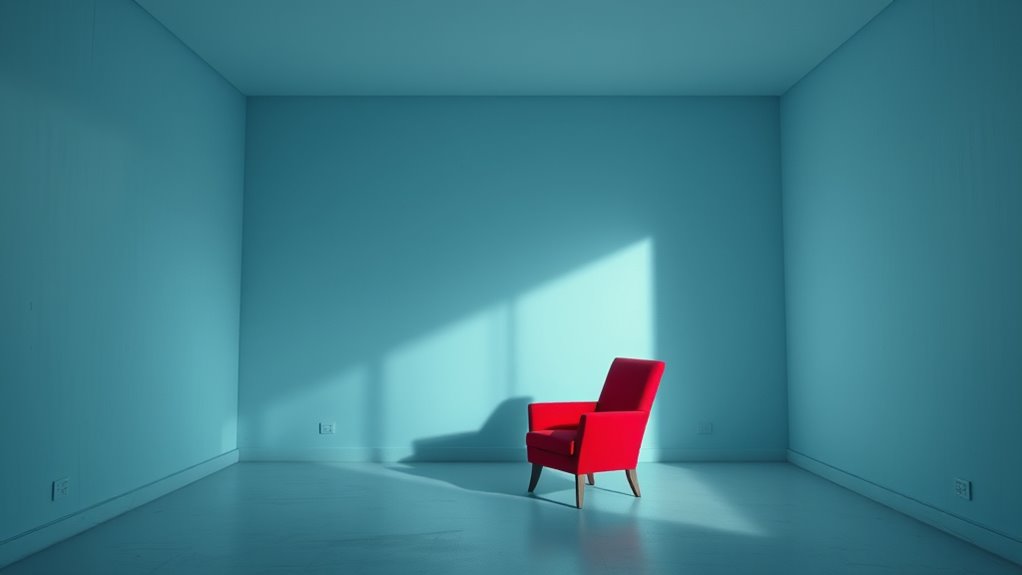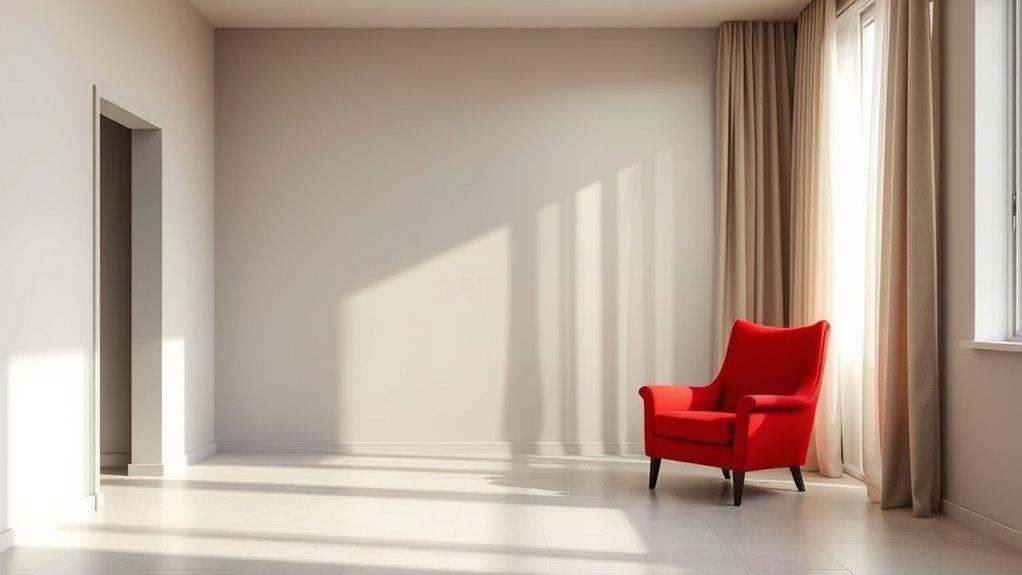Chromophobia occurs when certain color choices trigger subconscious emotional reactions, causing stress without your awareness. Your brain associates specific hues with past experiences, cultural meanings, or personal symbols, which can evoke feelings like anxiety, discomfort, or even fear. These reactions may seem automatic, but understanding their roots can help you manage your responses better. If you keep exploring, you’ll discover how deep-rooted color perceptions influence your feelings and ways to ease this silent stress.
Key Takeaways
- Chromophobia involves emotional distress triggered by specific colors due to learned associations or cultural influences.
- Personal experiences and societal conditioning can cause certain colors to evoke stress or discomfort.
- Awareness of subconscious color reactions can help manage and reduce color-related anxiety.
- Cultural differences shape individual color perceptions, potentially intensifying stress in diverse environments.
- Recognizing and understanding deep-rooted color associations can improve emotional well-being and interactions with colors.

Have you ever wondered why some people feel uneasy around certain colors? It’s not just a matter of personal taste or simple preference; often, the feelings tied to specific hues run much deeper, rooted in psychological effects and cultural implications. When you encounter a color that triggers discomfort, it’s likely because your mind has associated that hue with certain emotions, memories, or societal messages. For example, the color black might evoke feelings of mourning or fear in some cultures, while in others, it symbolizes power and sophistication. These associations shape how you respond to colors subconsciously, influencing your mood and behavior without you even realizing it.
Psychological effects play a significant role in chromophobia—the fear or aversion to certain colors. Your brain processes colors through a complex network of emotional responses, often learned over time. For instance, red might stimulate excitement or aggression, but in some contexts, it can also signal danger or warning, making you wary of it. Green, associated with nature and tranquility, can also evoke feelings of envy or discomfort if linked to negative experiences. These reactions aren’t just random; they’re ingrained through personal experiences, media exposure, and societal conditioning. When a color consistently triggers stress or unease, you might develop a subconscious aversion that influences your choices and interactions, even if you aren’t fully aware of the underlying reasons.
Colors evoke deep emotional responses shaped by experience and culture.
Cultural implications deepen this connection. Different societies interpret colors in diverse ways, and these meanings seep into your subconscious, shaping your reactions. For example, white symbolizes purity in Western cultures but can represent mourning in some Eastern traditions. If you grew up in a culture where a certain color is linked to negative connotations, you might develop an instinctive discomfort towards it, even if that color is widely accepted or celebrated elsewhere. This cultural lens adds layers of complexity to chromophobia, making it a highly individualized experience. What causes anxiety or stress for you might be perfectly normal or even desirable for someone from a different background.
Understanding these psychological effects and cultural implications helps explain why chromophobia exists and why some colors trigger stress. It’s not just about aesthetics; it’s about deep-seated associations that shape your emotional landscape. Recognizing this can help you become more aware of your reactions and, potentially, work toward overcoming unnecessary fears or discomforts related to color. Additionally, embracing cultural intelligence can aid in understanding and managing these reactions by acknowledging the diverse meanings colors hold across societies. Ultimately, your feelings towards colors are a blend of personal history, societal influences, and subconscious signals—elements that determine how you perceive and respond to the vibrant world around you.
Frequently Asked Questions
How Common Is Chromophobia Worldwide?
You might wonder how common chromophobia is worldwide. It’s not very widespread as a clinical condition, but cultural influences and color symbolism play a big role in individual reactions to colors. Some cultures associate specific colors with negative meanings, causing stress or discomfort. While many people aren’t diagnosed with chromophobia, these cultural factors can make certain color choices stressful or challenging for some, especially in design or personal preferences.
Can Chromophobia Affect Children Differently Than Adults?
You might notice that chromophobia affects children differently than adults because their color perception is still developing. During childhood development, kids are more sensitive to certain colors, which can trigger stress or discomfort. This heightened sensitivity means that color choices can impact their mood and behavior more strongly. As they grow, their responses often change, making understanding their reactions essential for creating supportive environments tailored to their evolving childhood development needs.
Are There Specific Colors More Likely to Cause Stress?
You might notice that certain colors cause stress due to color associations and cultural influences. For example, red can evoke urgency or aggression in some cultures, while white might symbolize mourning elsewhere. These associations shape your emotional responses, making some colors more likely to trigger stress. Understanding these cultural influences helps you recognize why specific colors impact you differently and can guide you in choosing more calming color options.
What Are Effective Treatments for Chromophobia?
Did you know that cognitive therapy helps 70% of people overcome specific phobias like chromophobia? To treat your fear, you should consider cognitive therapy, which reprograms negative thoughts about colors. Exposure techniques gradually introduce you to stressful colors in safe environments, reducing your anxiety over time. Combining these methods can markedly lessen your stress, making color choices less overwhelming and improving your overall well-being.
How Does Chromophobia Impact Daily Decision-Making?
You might find that color avoidance leads to decision anxiety, making everyday choices more stressful. When faced with color-related options, you could hesitate or feel overwhelmed, which impacts your confidence and efficiency. This constant struggle to select or avoid certain colors affects your daily routine, relationships, and even your mood. Recognizing this pattern helps you understand how chromophobia influences your decisions, allowing you to seek strategies to manage these reactions effectively.
Conclusion
Remember, sometimes the fear of color can color your world in ways you didn’t expect. If choosing the right hues causes stress, don’t be afraid to take a step back and breathe. As the saying goes, “Beauty is in the eye of the beholder,” so trust your instincts and find what truly makes you happy. Embrace your unique palette, and you’ll find that sometimes, less really is more.









